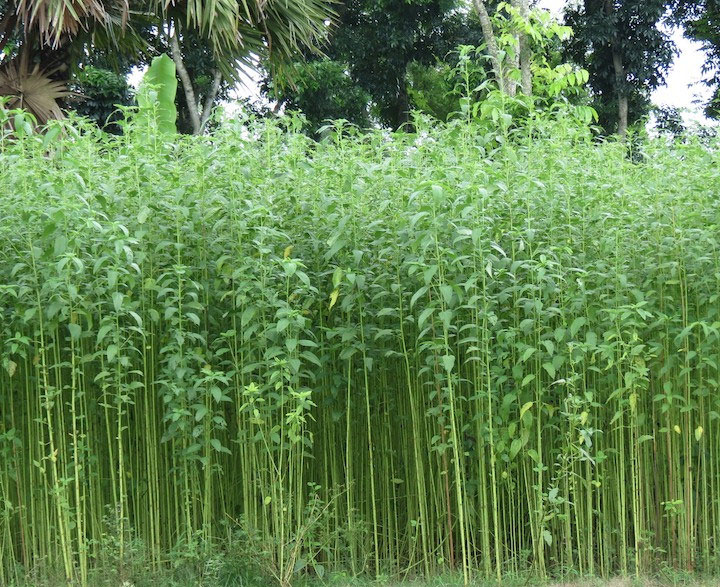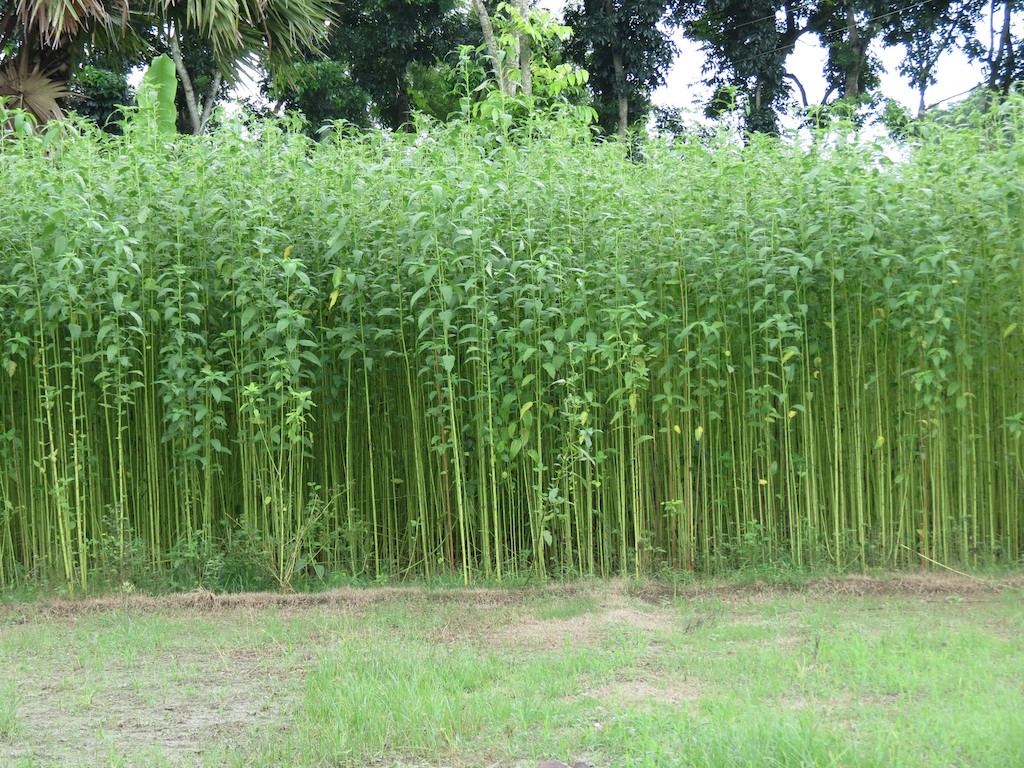Your Jute plant images are ready in this website. Jute plant are a topic that is being searched for and liked by netizens today. You can Find and Download the Jute plant files here. Find and Download all royalty-free photos and vectors.
If you’re searching for jute plant images information connected with to the jute plant topic, you have pay a visit to the right site. Our site frequently provides you with suggestions for refferencing the highest quality video and image content, please kindly search and find more informative video articles and graphics that fit your interests.
Jute Plant. After 10 minutes or less, the planted seed will become jute. Jute plants ( corchorus olitorius ). Jute is extracted from the bark of the white jute plant (corchorus capsularis) and to a lesser extent from tossa jute (c. The plant�s stems are then submerged in water for a couple of days.
 Jute? What is it? Tell me about Jute Jute Blog Go Jute From gojute.co.uk
Jute? What is it? Tell me about Jute Jute Blog Go Jute From gojute.co.uk
Jute is grown by planting 3 jute seeds in a hops patch using a seed dibber. Stripping of retted jute in the water bodies. The jute crop is an annual herbaceous plant that is cultivated for its fiber. This is accomplished by spinning the fiber into a coarse thread. For better growth of the plant it requires warm, humid climates along with sufficient water. While jute isn’t very popular in the western world, it is one of the primary textile fibers of india and neighboring countries.
Tossa jute is grown throughout tropical asia and africa, and its mucilaginous leaves and young stems are commonly eaten as a vegetable similar to okra.
Olitorius, including both tossa and daisee varieties—belonging to the hibiscus, or mallow, family (malvaceae), and their fibre. Jute was once known as the golden fibre of bangladesh, since it was the most important cash crop for the country. Jute plant has a glabrous. Retting process of jute using crijaf sona in the water bodies. Jute fibre is basically lignocellulosic, biodegradable, and renewable. Olitorius, including both tossa and daisee varieties—belonging to the hibiscus, or mallow, family (malvaceae), and their fibre.
 Source: gojute.co.uk
Source: gojute.co.uk
As long as rains are pouring religiously you are assured of a continuous supply. The long, soft and shiny fibers are spun into coarse, strong threads that are then put to a multitude of uses. Jute plant in the field after 100 days. Jute plant has a glabrous. The plants belonging to the genus corchorus are believed to be the primary producers of this fibre.
 Source: dhcrop.bsmrau.net
Source: dhcrop.bsmrau.net
Jute is extracted from the bark of the white jute plant (corchorus capsularis) and to a lesser extent from tossa jute (c. Capsularis, a species with round pods which is grown in lowland areas subject to inundation. The key chemical additives of jute fibres are lignin and cellulose. Jute is a natural fiber derived from plants. Golden jute in farmer�s house
 Source: formystudentsfromme.blogspot.com
Source: formystudentsfromme.blogspot.com
Jute is second to cotton in terms of production. The jute fibers are located beneath the bark, primarily concentrated near the woody, central parts of the stalk. It is a natural fibre with golden and silky shine and hence called the golden fibre. We used to sustainably gather this from the forest. Olitorius, including both tossa and daisee varieties—belonging to the hibiscus, or mallow, family (malvaceae), and their fibre.
 Source: terima-kasih.nl
Source: terima-kasih.nl
The jute crop is an annual herbaceous plant that is cultivated for its fiber. Jute plant in the field after 100 days. Tossa jute is grown throughout tropical asia and africa, and its mucilaginous leaves and young stems are commonly eaten as a vegetable similar to okra. Olitorius, an upland species with long pods, is but little inferior. 85% of jute manufacturing is localized to the ganges river delta, which spans at some point of bangladesh and the bengal area of india.
 Source: jutexpo.co.uk
Jute fibre is produced mainly from two commercially important species, namely white jute (corchours capsularis), and tossa jute (corchorus olitorius).the centre of origin of white. Jute is grown by planting 3 jute seeds in a hops patch using a seed dibber. In zimbabwe it naturally grows in summer and does not need any special attention. Demand for medicinal plants is increasing in both usually developed and developing countries due to growing recognition of natural products being equally. Capsularis, or white jute, and c.
 Source: dhcrop.bsmrau.net
Source: dhcrop.bsmrau.net
Olitorius, an upland species with long pods, is but little inferior. The key chemical additives of jute fibres are lignin and cellulose. Owing to its high tenacity and low extensibility, it is traditionally being used for producing packaging material. The jute fibers are located beneath the bark, primarily concentrated near the woody, central parts of the stalk. Jute is one of the important natural fibers after cotton in terms of cultivation and usage.
 Source: pinterest.com
Source: pinterest.com
Introduction jute (जूट) is a natural fibre with golden and silky shine and hence called the golden fibre. Jute fibre is a type of plant fibre which is widely known for its ability to be spun into strong and coarse threads. Quality wise bundling of jute after drying. The hops patch must be raked clean of weeds. Tossa jute is grown throughout tropical asia and africa, and its mucilaginous leaves and young stems are commonly eaten as a vegetable similar to okra.
 Source: gojute.co.uk
Source: gojute.co.uk
Jute is one of the important natural fibers after cotton in terms of cultivation and usage. Jute is a long, soft, shiny vegetable fiber that can be spun into coarse, strong threads.it is produced from plants in the genus corchorus, which was once classified with the family tiliaceae, more recently with malvaceae, and has now been reclassified as belonging to the family sparrmanniaceae.“jute” is the name of the plant or fiber that is used to make burlap, hessian. Jute was once known as the golden fibre of bangladesh, since it was the most important cash crop for the country. It is also stiff and harsh. Jute is mainly made of cellulose and lignin which is partially textile fiber and partially wood.
 Source: zesttex.com
Source: zesttex.com
The life of the jute is 100 to 120 days. Individual jute fibres are known to be soft, long, and shiny in nature. The plant�s stems are then submerged in water for a couple of days. Jute fibre is a type of plant fibre which is widely known for its ability to be spun into strong and coarse threads. It is a natural fibre with golden and silky shine and hence called the golden fibre.
 Source: vorpur.com
Source: vorpur.com
The hops patch must be raked clean of weeds. Jute plants grow to be over 10 feet high, and the fibers derived from these plants are harvested in a single long string. Tossa jute is grown throughout tropical asia and africa, and its mucilaginous leaves and young stems are commonly eaten as a vegetable similar to okra. Jute is a bast fibre obtained from the secondary phloem. The key chemical additives of jute fibres are lignin and cellulose.
.jpg “Common Jute Species in West Bengal Sahapedia”) Source: sahapedia.org
Jute is a natural fiber derived from plants. Jute is mainly made of cellulose and lignin which is partially textile fiber and partially wood. Jute is a plant grown with the farming skill at level 13 farming. Jute fibre is a form of plant fibre that is well known for its potential to be spun into sturdy and coarse threads. For better growth of the plant it requires warm, humid climates along with sufficient water.
 Source: nyp-corp.com
Source: nyp-corp.com
The bast fibre is obtained from c. Jute fibre is basically lignocellulosic, biodegradable, and renewable. This is accomplished by spinning the fiber into a coarse thread. Taken from two varieties of the corchorus plant, white jute and tossa jute which is softer, silkier, and stronger than white jute. Retting process of jute using crijaf sona in the water bodies.
 Source: sakasaka.net
Source: sakasaka.net
Jute plant in the field after 100 days. Jute plants grow to be over 10 feet high, and the fibers derived from these plants are harvested in a single long string. The jute fibers are located beneath the bark, primarily concentrated near the woody, central parts of the stalk. Jute is extracted from the bark of the white jute plant (corchorus capsularis) and to a lesser extent from tossa jute (c. Jute fibre is basically lignocellulosic, biodegradable, and renewable.
 Source: walmart.com
Source: walmart.com
Then fibres are separated by hand through a method called stripping. 85% of jute manufacturing is localized to the ganges river delta, which spans at some point of bangladesh and the bengal area of india. Olitorius, an upland species with long pods, is but little inferior. Individual jute fibres are known to be soft, long, and shiny in nature. Jute is a plant grown with the farming skill at level 13 farming.
 Source: the-sustainable-fashion-collective.com
Source: the-sustainable-fashion-collective.com
Despite the fact that jute tends to be rough in texture, fine threads of it are sometimes used to create. Jute is a plant grown with the farming skill at level 13 farming. Jute plants ( corchorus olitorius ). The life of the jute is 100 to 120 days. Introduction jute (जूट) is a natural fibre with golden and silky shine and hence called the golden fibre.
 Source: flickr.com
Source: flickr.com
Jute is second to cotton in terms of production. Quality wise bundling of jute after drying. Carrying of raw jute for drying. Individual jute fibres are known to be soft, long, and shiny in nature. Despite the fact that jute tends to be rough in texture, fine threads of it are sometimes used to create.
 Source: healthbenefitstimes.com
Source: healthbenefitstimes.com
This is accomplished by spinning the fiber into a coarse thread. It is the cheapest vegetable fibre procured from the bast or skin of the plant�s stem and the second most important vegetable fibre after cotton, in terms of usage, global consumption, production, and availability. The long, soft and shiny fibers are spun into coarse, strong threads that are then put to a multitude of uses. Jute fibre is basically lignocellulosic, biodegradable, and renewable. I know you now want to know which part of the jute plant is edible.
 Source: premchandjute.com
Source: premchandjute.com
While jute isn’t very popular in the western world, it is one of the primary textile fibers of india and neighboring countries. The bast fibre is obtained from c. I know you now want to know which part of the jute plant is edible. The life of the jute is 100 to 120 days. Jute fiber is used to make a variety of products, including burlap sacks, twine, and carpet backing.
This site is an open community for users to do sharing their favorite wallpapers on the internet, all images or pictures in this website are for personal wallpaper use only, it is stricly prohibited to use this wallpaper for commercial purposes, if you are the author and find this image is shared without your permission, please kindly raise a DMCA report to Us.
If you find this site adventageous, please support us by sharing this posts to your favorite social media accounts like Facebook, Instagram and so on or you can also bookmark this blog page with the title jute plant by using Ctrl + D for devices a laptop with a Windows operating system or Command + D for laptops with an Apple operating system. If you use a smartphone, you can also use the drawer menu of the browser you are using. Whether it’s a Windows, Mac, iOS or Android operating system, you will still be able to bookmark this website.







